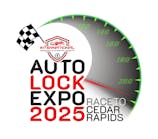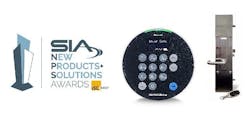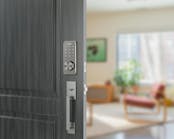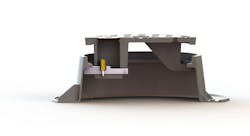In our February issue, we looked at security needs of multifamily developments and we are focusing on healthcare security in March this issue. Somewhere in the middle – part apartment complex, part medical facility – lies one of the fastest-growing residential categories, senior living.
According to the 2020 U.S. census report, one in six Americans were 65 and over, representing the greatest 10-year increase in this demographic within the past 100 years, partially driven by improvements in healthcare that are enabling us to live longer. This trend is expected to continue as all baby boomers will have reached senior status by 2030. By 2040, the number of people aged 85 or older is expected to more than double from 2019 levels, according to the U.S. government agency, Administration for Community Living.
As our population ages, we see two distinct types of senior living. First, the younger, tech savvy seniors want connected homes with all the bells and whistles, similar to upscale residential developments. Second are the elderly and ill who need security and services more in line with medical facilities. Both are burgeoning markets for savvy locksmiths.
There are currently more than 30,000 assisted living facilities and 1.2 million licensed beds in the United States, according to the industry group National Center for Assisted Living. Demand is projected to grow by 80 percent by 2030. This growth market brings numerous opportunities for security pros, including new and retrofit installations and service contracts for recurring revenue.
Like multifamily developments, primary security needs of senior housing include: controlled access to the building with secure entrances and exits, individual unit locks, code-compliant fire prevention hardware and access to amenities and mailrooms. While this may be enough for 55 and up homes and apartments, the needs increase as the age and medical issues of senior living residents increase.
This article looks specifically at the needs of assisted living and long-term care facilities. Beyond electronic access control, these may also include video surveillance, secure medications management/narcotics storage, stepped-up fire safety protocols (especially when oxygen is in use), emergency response triggers like alarms and pull cords, plus wandering prevention for those with dementia.
Perimeter Access Control
Perimeter access control helps prevent trespassing and (if needed, based on the type of facility) keeps residents from exiting the facility without staff or family to accompany them. Staff members need easy access to front and back doors, nursing stations and other staff-only areas, gaining entrance with a credential such as a card, badge or smartphone. Visitor access is generally restricted to a main entry, which is generally staffed or uses an intercom system.
Potential products: electronic locks, card readers, intercom systems, remote release buttons
Access control is especially crucial for memory care units, as residents who have dementia or Alzheimer’s may wander off to other parts of the building or even exit the facility if the building is not properly secured. The units require a code-compliant method for preventing wandering, while still allowing staff members to come and go.
For memory care units, additional needs include:
- Electronic access control of specific areas so residents can only access certain parts of the facility with the aid of a staff member.
- Electronic band/pendant for residents that communicates with door-mounted readers. If a resident passes through a restricted door, the system triggers an alarm for the staff.
- Limited entry/exit points to make it easy for staff to monitor patient movement in the facility, still providing code-compliant egress in the event of a fire.
Potential products: EAC, exit alarms, resident credentials
Video Surveillance
Security cameras are vital not just to keep track of residents and improve staff productivity, but also for the overall security of the facility. Best practices call for 24/7 video surveillance of building entrances and exits, hallways, elevators and parking lots. A gray area is video monitoring of private residences, which would be a privacy violation for independent or assisted living apartments but potentially helpful for skilled nursing floors or units for patients with dementia.
Video surveillance can also help administration of medication and other resources. In case of theft, video footage can also help to resolve liability and theft claims and decrease workers’ compensation.
Potential products: Cameras, camera housings, recorders, video management systems
Fire Safety
While fire systems are required for any multifamily building, they are especially important in a facility that takes care of individuals with mobility challenges who may require additional time to evacuate in the occasion of an emergency situation. People with mobility or vision challenges also need easy-to-operate, ADA-compliant door hardware and a clear path of egress.
Potential products: low-energy door operators, alarm systems, monitoring, panic hardware, exit devices, levers, lighting, signage
In-Room Monitoring
Residents can’t have 24/7 staff assistance in their rooms, so in-room monitoring can help ensure resident safety and notify staff of emergencies. For example, motion sensors can be installed inside the room to monitor the resident’s activity. These devices can alert staff when residents need assistance getting out of bed, allowing a staff member to aid them.
Potential products: emergency pull cords and buttons, motion sensors, intercoms
Smart Products
On the surface, it sounds like connected home products would be ideal. Residents could control their door locks, alarms, lighting and thermometers with their smartphones as well as call for help in an emergency. This is certainly the case moving forward with active 55 and up communities. But keep in mind that the elderly are not always able or tech-savvy enough to embrace newer technology. And if they don’t have a smartphone, there’s no way to use phone apps to grant access or call for help.
Potential Products: Connected Home systems operated by smartphone apps
Narcotics and Record Storage
Meeting HIPPA requirements for patient record storage and safeguarding narcotics and other medications are additional challenges for assisted living.
Potential products: cabinet locks with audit trails, safes
Controlled Egress
Controlled Egress is a specific code category that may apply to memory care facilities or other healthcare facilities where patients must be prevented from wandering for their own safety. Applications are very limited and should always be approved by the Local Authority Having Jurisdiction.
Although doors that are required for egress and additional doors that are provided for egress purposes must typically allow a building occupant to exit freely, controlled egress locks are an exception.
These typically include fail safe locks which release upon power failure, the capability of remote release from one or more prescribed locations within the building, and immediate egress upon fire alarm activation. All staff needs the ability to release the locks, in case evacuation is necessary. Staff members must carry the keys, codes, or other credentials to unlock the doors, and these procedures must be documented in the facility’s emergency plan.
“It’s important to remember that controlled locks are only allowed by code in health care units where patients require containment for safety or security. These locks are not permitted by the model codes in other occupancy types, or on doors serving other areas in a medical facility,” said Lori Greene, Manager – Codes and Resources with Allegion.
For more information, read the full article on controlled egress at https://idighardware.com/2024/01/decoded-controlled-egress-locks/
Emily Pike | Managing Editor
Emily Pike is managing editor of Locksmith Ledger International.






